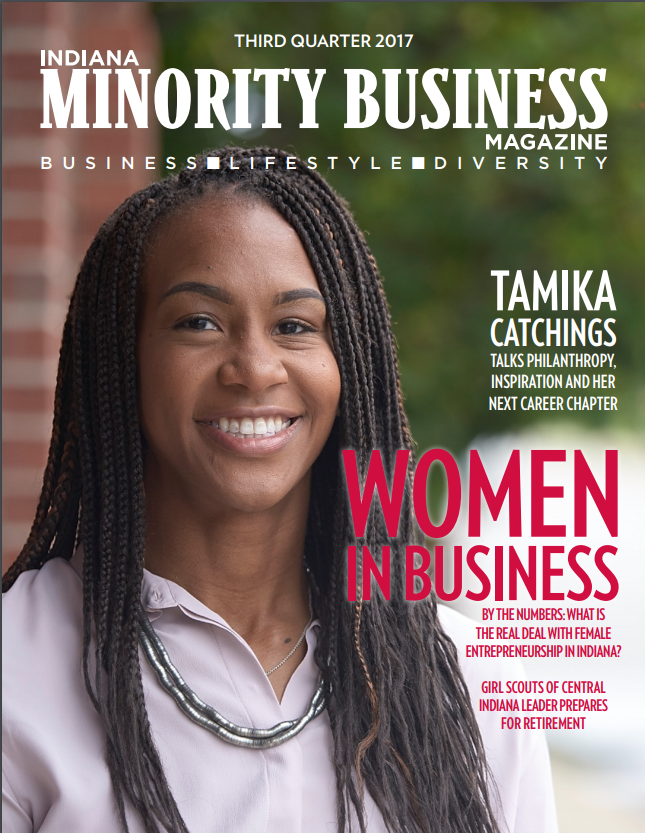During a visit to her expertly decorated home, Blackburn flaunted a few of her new pieces, including a gown for the mother of a bride that was still in the design phase. On a full rack, stationed in her foyer, Blackburn shuffled through gown after gown. The client, who bought her own wedding gown from Blackburn 27 years prior, wanted something with lace. Blackburn ran down the different variations, her manicured fingers outlined the differences between the types; chantilly, knit, embroidered. A shuffle or two later, she landed on another example. A navy blue creation with a keyhole cutout for a touch of skin. “She can be covered and still be quite sexy,” she said with her signature smile. In another room, she opened up one of many photo albums and pointed out a chic black and white striped casual dress. The client who purchased it in the ’80s has since passed it on to her daughter. “I love that because it means that it met my own criteria for what makes good design,” Blackburn said of the garment’s lasting power. “I’m inspired to make beautiful things. I don’t want to make junk or throwaways.”
IMBM recently caught up with Blackburn to chat about her career, inspirations and current projects.
Responses have been edited for clarity and brevity.
IMBM: What is the first piece of fashion you ever constructed?
Blackburn: A cocktail dress, and I didn’t need a cocktail dress! I was in high school and too young to even be wearing it. It was the first thing I pulled off as being a really designer creation. I was making clothes prior to that but I was just learning the rudiments from my mom. By the time I got to high school, I was ready for the big time! I could figure out in my mind, and I still do it now, I lie in bed or sit and my mind will be figuring out the construction to achieve a certain look and how I could put it together so that it’s beautiful.
What, in your opinion is the key to making designs that lasts through the decades?
I figured something out about fashion, people concentrate now on style and I like the idea of styling up. For instance, take the look that you have -— or the look you think that you have or want to have, and figure out how to take it up a notch so that you get the individual expression that you really aspire to have. The way you do that is to make sure that the fashion is solid and the fashion is the silhouette, fabric, construction and wearability of a garment. I think that when you get too far astray from doing solid fashion you get into what I call fad. It’s for a season. You may or may not want to keep it longer than that because it will be dated and you may look silly in it or someone will tell you that you look silly in it. Fashion changes and it should. In order to be dynamic and diverse it needs to change. When it gets too far on the spectrum of bizarre it no longer serves a purpose functionally. That does not constrict a creative person to being monotonous it just challenges you to be aware of the fact that you’re trying to clothe a human body that has to move, sit and stand and to design something that won’t work in any of those scenarios is not truly advancing the field as far as I’m concerned.
You have lead quite a life and career as an artist of many mediums, business owner and philanthropist. There are many people who admire you and consider you to be inspiring. When you reflect on that impact, what are the thoughts that come to mind?
Once in awhile, I have to ask why? But most of the time I acknowledge their compliment and thank them because it feels good. If you have worked out of your own imagination to bring things to fruition you get a sense of fulfillment just out of doing it but to have the acknowledgement of other people is a bonus. It’s a wonderful thing… you don’t work for that purpose but it’s great to feel it and I do feel it, without exception, everywhere I go. Someone asks, “Can I have a selfie with you?” “May I give you a hug Mrs. Blackburn?” or “You don’t know me but I have known you, watched you and admired you.” I think that it is the cherry atop my sundae.
You talked about working out of your own imagination, what are the things that inspire you when you sit down to sketch out a design?
I think my inspiration comes from wanting to create, number one. I don’t need a whole lot, I can look at my bird, at fish… I can look at flowers. I always keep orchids blooming and I love lilies. I think that I’m inspired by nature, people, activity and life. When I’m separated from any of those I feel it and my spirit gets depressed a little. I need to get out of the house more.





























